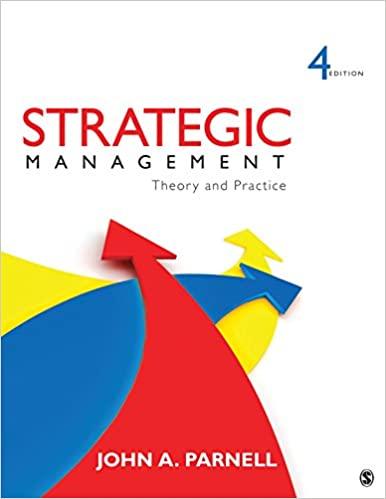Henry Ford founded Ford Motor Company in 1903 in Dearborn, Michigan. In 1908, Ford assembly lines produced
Question:
Henry Ford founded Ford Motor Company in 1903 in Dearborn, Michigan. In 1908, Ford assembly lines produced the company’s first car, the Model T. Henry Ford is often quoted as saying that a customer could have a Model T in any color as long as it was black. By the late 1910s, more than one-half of all vehicles on the road were Fords. In 1919, the firm bought back all of its outstanding shares and did not go public again until 1956.
Ford bought Lincoln in 1922, and the Model T was replaced with the Model A in 1932. Market share fell behind GM and Chrysler in the late 1930s, and Ford did not return to second place again until 1950. Ford introduced the infamous Edsel in 1958 and the popular Mustang in 1964.
Ford, like other domestic automakers, was hurt by the oil crisis of the 1970s. The company responded by cutting its workforce and closing plants during the 1980s. Ford purchased 75% of Aston Martin in 1987 (and the remaining shares in 1994). In 1988, the company introduced the Ford Taurus and Mercury Sable, and its domestic market share increased to 21.7%.
Ford diversified in the 1980s and 1990s, acquiring car rental agencies Hertz in 1994 and Budget in 1996 (which it sold the following year). Ford also established a one-third ownership stake in Mazda in 1997. During this time, international expansion was also evident. In 1997, Ford began building a minibus line in China. Ford purchased Volvo’s auto manufacturing operations in 1999, as well as several other related businesses.
In 2001, Ford announced a 50-50 truck-building joint venture with Navistar to produce a common medium-duty chassis customized for Ford and Navistar vehicles. In early 2002, Ford embarked on far-reaching cost-cutting measures, including the elimination of 35,000 jobs worldwide, the closure of three North American assembly plants, and the discontinuation of the Ford Escort, the Mercury Cougar, the Mercury Villager, and the Lincoln Continental. Ford continued to expand abroad, opening new facilities in China.
After 5 years at the helm and a failed restructuring effort, Ford remained as chairman of the board but was replaced as CEO by Boeing executive Alan Mulally in 2006. Ford’s “Way Forward” restructuring program was designed to cut costs in the company’s North American operations—including health care expenses—trim production capacity, cut its workforce, and build more customer-focused vehicles. Ford struggled in the late 2000s but did not seek U.S.
government assistance when GM and Chrysler pursued bankruptcy protection.
Ford has since returned to profitability, propelled by a growing global footprint. Ford has developed strategic alliances in a number of countries, including Russia, China, Turkey, and Vietnam.
Case Challenges
1. Is it necessary for Ford to produce and/or sell a large proportion of its vehicles abroad in order to maintain its strong domestic market position in the coming decade?
2. A number of analysts have suggested that world car makers will likely consolidate into only two or three within the next 20 years. Should Ford actively pursue any specific mergers and acquisitions at this point? Why or why not?
3. How can and should Ford address environmental concerns? Explain.
Step by Step Answer:






